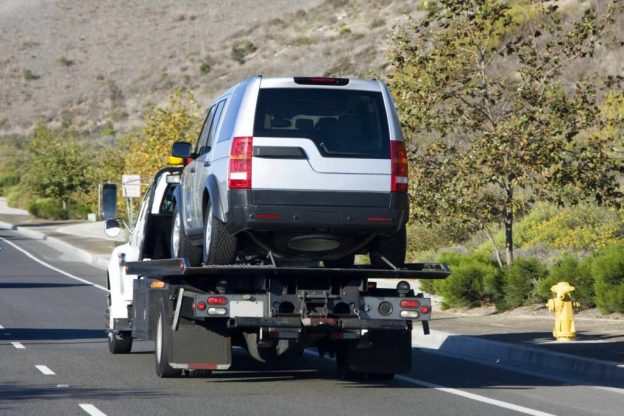
Winch out emergencies can come suddenly in Jrop services, especially when off-roading. Prepare for crises to avoid harming yourself, your vehicle, and others. Safe and successful recovery requires winch out knowledge. This article will help you prepare for a winch out emergency in Jrop Services by explaining the process, necessary equipment, safety considerations, and communication and coordination. Preventing winch out emergencies, employing professionals, insurance and legal issues, and practising and training will also be covered. These recommendations will help you winch out safely and efficiently.

Essential Equipment Needed for Winch Out Emergencies
When it comes to winch out situations, having the right tools can make all the difference in a safe and successful recovery. Here are some important pieces of tools that Jrop services needs for winch out emergencies:
Winch:
A winch is a motorized device that uses a cable or rope to pull a car out of a tough or stuck situation. The pull force of the winch should be strong enough to move the stuck car.
Winch cable or rope:
To connect the winch to the stuck car, a winch wire or rope is used. It should be strong enough to hold the weight of the car and the pulling force of the winch.
Snatch block :
A snatch block is a device that looks like a pulley and is used to improve the winch’s pulling power by changing the direction of the cable or rope.
Shackles:
Shackles are used to connect the winch cable or rope to the stuck car and the anchor point. They should be strong enough to hold up to the force of the winch pulling on them.
Tree saver strap:
During winch-out operations, a tree saver strap keeps trees and other support points from getting hurt.
Recovery straps:
Recovery straps are used to pull a car out of mud or snow when it gets stuck. They should be strong enough to hold the weight of the car and the pulling force of the recovery vehicle.
Gloves :
During winch out activities, you must wear gloves to protect your hands from cuts, scrapes, and blisters.
Safety equipment :
In case of situations or accidents, safety gear like a first-aid kit, fire extinguisher, and reflective vest should be on hand.
Assessing The Situation And Developing A Plan
Safe and effective recovery requires a thorough assessment of the situation prior to beginning the winch out operation. Here are some measures you can take to evaluate the situation and formulate a strategy:
STEP 1: Determine the stuck vehicle’s condition
Evaluate the vehicle’s condition and determine if it can be moved without causing further damage. If the vehicle has sustained extensive damage, it may be unsafe to transport it.
STEP 2: Check the terrain
Check the terrain and identify any potential obstacles or hazards, such as boulders, trees, or ditches, that could impede the winch out operation.
STEP 3: Identify the anchor point
Identify a secure anchor point to which the pulley cable or rope can be attached. The anchor point must be able to withstand the winch’s drawing force.
STEP 4: Determine the capacity of the winch
Determine the pulley capacity necessary to safely recover the stalled vehicle. The capacity of the winch should be sufficient to draw the vehicle without causing strain or damage.
STEP 5: Select the proper equipment
Choose the appropriate apparatus, such as the appropriate winch cable or rope, snatch blocks, and shackles.
STEP 6: Develop a plan
Develop a plan for the winching out operation, taking into consideration the vehicle’s condition, the terrain, the required winch capacity, and the necessary equipment. Additionally, the plan should include safety measures and precautions to reduce the likelihood of accidents or injuries.
STEP 7: Transmit the plan
Clearly and effectively communicate the plan to the recovery team, the driver of the stalled vehicle, and everyone else in the area. Ensure that all parties are aware of their respective roles and responsibilities.
Hiring Professional Help for Winch Out Emergencies
In some cases, the best thing to do for a winch out emergency in Jrop services may be to hire a professional. Here are some justifications:
- Knowledge and Experience
Professional winch-out services have the expertise and experience to recover your vehicle without causing further damage in a safe and timely manner.
- Proper Equipment
Professional services have access to equipment designed specifically for winch-out operations, such as winches, snatch blocks, and recovery harnesses.
- Safety
Professional winch-out services prioritize safety and have the required training and equipment to ensure that the recovery operation is carried out without incidents or injuries.
- Insurance
Generally, professional winch-out services are insured, so you are covered in the event that any damages or injuries occur during the recovery operation.
- Convenience
It may be more convenient to hire a professional winch-out service than to attempt to recover your vehicle yourself, particularly if you are unfamiliar with the terrain or lack the necessary equipment.

Conclusion
Winch-out emergencies can be stressful and dangerous, but with the right planning, you can lower the risks and make it more likely that the recovery will go well. By having the necessary tools on hand, assessing the situation, making a plan, taking safety precautions, and understanding when to call for professional help, you can be better prepared to handle winch emergencies in Jrop services. Remember that safety should always be our top priority, and by taking the necessary precautions to ensure a safe and efficient recovery operation, you can prevent further harm and ensure everyone’s well-being.



